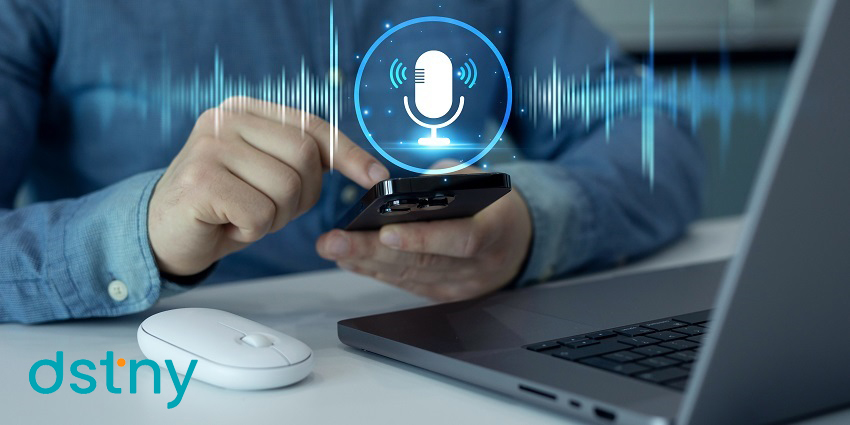One of the best ways to expand the value of any Microsoft Teams investment is to leverage the right tools and hardware alongside the collaboration platform. While the Teams app gives business users everything, they need to share information, audio, and video, additional hardware can be extremely valuable for a range of use cases.
The right Teams desk phones make it easier for administrators, customer service reps, and other members of staff to manage calls and route them to the right people. The best displays ensure teams can collaborate more effectively, with shared content, whiteboards, and high-quality video streams.
Of course, as meeting and work spaces continue to evolve, the most exciting features on Teams desk phones and displays are transforming alongside them. Here are some of the hottest trends guiding purchasing decisions in the Teams endpoint landscape today.
1. Interactive Displays and Whiteboards
Displays and monitors have always been valuable tools in meeting rooms and collaborative workplaces. However, in the past, they were primarily used for showcasing and consuming content.
Today, however, innovative touch-screen tools and systems have emerged to help boost interactivity in the hybrid workplace. The right solutions can allow teams to brainstorm in real-time using whiteboard software within Teams, sketch ideas, and even annotate documents.
Interactive solutions like the Yealink DeskVision A24 provide multiple employees with a convenient way to use content and work together in a distributed workplace. These tools are becoming increasingly popular in creative workplaces, as hybrid work grows more common.
2. Immersive Conference Experiences
As teams become more distributed, companies are increasingly looking for ways to use their Teams devices to better align and connect their workforces. Immersive solutions, such as touchscreen pads, tablets, and whiteboarding systems can work alongside AI innovations to boost engagement.
While there may not be any certified XR tools for the Microsoft Teams environment yet (aside from the Microsoft HoloLens collection), many displays and desk phones now feature capabilities intended to make meetings and interactions feel more inclusive.
For instance, cameras built into displays and desk phone systems can use AI to automatically track participants, and frame them effectively in the meeting environment. Intelligent speaker and microphone systems can also eliminate excess background noise, and increase the clarity of voices, allowing for clearer discussions between workers and customers.
3. Advanced Control Options
The increasing presence of artificial intelligence in Microsoft Teams endpoints is also having a direct impact on how employees use and interact with tools. For instance, in a shared meeting environment, Microsoft Teams displays can be configured to leverage voice and gesture controls. Built-in assistants like Microsoft Cortana allow users to set up and manage meetings without touching anything.
This can be ideal in environments where business leaders want to improve the hygiene of shared spaces, and reduce interactions with shared devices. Gesture controls, which allow users to swipe through pages and access documents with a flick of the wrist, can also make meetings and presentations feel more natural and seamless.
Some smart camera systems built into endpoints can even recognize users automatically, based on biometric data, configuring rooms and desks to their needs in an instant. There are even tools which allow users to connect to a display using a proximity sensor, so individuals can connect the Teams app on their smartphone to the one on a desk phone or display in seconds.
4. Enhanced Inclusivity
As mentioned above, as hybrid and remote work strategies become more common, many organisations are looking for ways to bridge the gaps between their teams with the right combination of hardware and software. Teams itself has various tools designed to align and synchronise staff, such as the “Together Mode” meeting solution, and Microsoft Viva.
The right desk phones and displays can further build on this desire for inclusion, utilizing a variety of cutting edge features. For instance, AI webcams built into a display can track every member of a room, and ensure each individual is displayed equally, and with full clarity, regardless of whether they’re sitting, standing, or moving around a room.
Improved microphone technology can help to ensure sound is picked up clearly in all directions, delivering excellent clarity, even if multiple people are talking at once. Additionally, many Microsoft certified devices are built with accessibility in mind, to ensure those with disabilities can still achieve the highest levels of productivity, wherever they work.
5. More Personalisation Options
The demand for personalization in the modern meeting and workspace is growing. Around 31% of working professionals believe their current meeting room is boring, or ill equipped for their needs. As new generations and employee personas enter the workforce, a one-size-fits-all approach to hardware is no longer viable.
Fortunately, many powerful tools certified for Microsoft Teams give companies more freedom to allow their team members to personalize their experience. Desk phones can be configured with specific hot keys and numbers to help users connect with the right people faster. Screens can be configured with different layouts and settings to match the branding of an organization, and showcase information in the way that makes most sense to the user.
AV developers are even producing tools which give users a variety of ways to connect to Teams and their telephony stack, through Wi-Fi, Bluetooth, and wired connections. Plus, partners working with Microsoft are giving businesses more ways to leverage tools, offering room as a service, and device as a service subscriptions. The variety of different tools on the market ensures every team member can access the exact functionality they need to work at their optimal level.
6. Greater Focus on Security
Finally, as digital threats continue to abound in the evolving workplace, companies developing Microsoft Teams endpoints, such as desk phones and displays are focusing more heavily on providing business buyers with peace of mind. Today’s solutions come with encryption and other security factors already built-in, to protect crucial conversations.
Phones and displays can be purchased with detachable cameras, or privacy lenses which help to reduce the risk of criminals tapping into a video feed and collecting crucial information. What’s more, because certified devices come with Teams access built-in, they also allow users to access administrative and security tools on the Teams admin backend.







